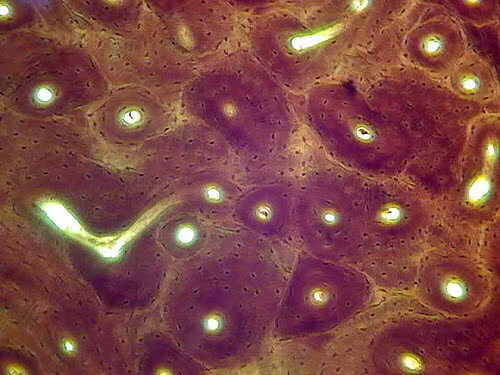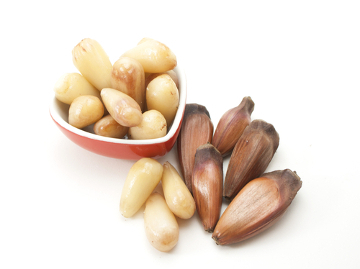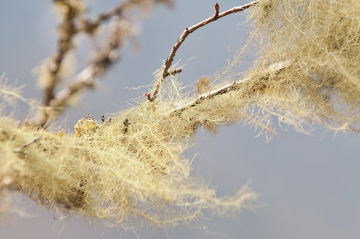Bone tissue is a specialized form of connective tissue, in which bone cells are found in an extracellular matrix rich in collagen, calcium phosphate, and ions.
It is the main constituent of the skeleton.
Despite their rigid structure, bones are living and dynamic elements that are constantly remodeling.
Bone Tissue Classification
Bone tissue can be classified according to its macroscopic (observed with the naked eye) and microscopic structure.
As for the macroscopic structure, bone tissue can be classified into compact bone and cancellous bone:
Compact bone
It consists of parts without visible cavities.
These bone types are related to protection, support and strength.
They are usually found in the diaphyses (long stem of bone).
Cancellous bone
It consists of parts with many intercommunicating cavities.
It represents most of the bone tissue of short, flat, and irregular bones.
Most are found in the epiphyses (the enlarged ends of a long bone).
as to microscopic structure, bone tissue can be classified into primary and secondary:
primary bone tissue
Also called non-lamellar or immature.
It has an irregular arrangement of collagen fibers, no lamellae are formed.
It has fewer minerals and a greater amount of osteocytes, compared to secondary bone tissue.
It is the first type of bone that forms, even during embryonic development. This tissue is uncommon in adults, persisting in areas of intense remodeling, such as dental alveoli and tendon insertion regions.
secondary bone tissue
Also called lamellar or mature, it is found in adults.
It has collagen fibers organized into lamellae, which are parallel to each other. Osteocytes are arranged on the inside or surface of each lamella.
This type of fabric is composed of a set of layers of circular, concentric and different diameter lamellae, called Havers systems or Harvesian system.

Secondary bone tissue. The lighter dots represent the Havers systems and the black dots are osteocytes.
Bone Tissue Composition
Bone tissue is formed by cells and calcified extracellular material, the bone matrix.
The cells in this tissue can be of three types: osteoblasts, osteocytes and osteoclasts.
You osteoblasts are located on the periphery of the bone and they have long cytoplasmic extensions that touch neighboring osteoblasts.
They are responsible for producing the bone matrix that is deposited around them. When trapped by the newly synthesized matrix, they are called osteocytes.
You osteocytes they are the most abundant cells in bone tissue. By being retained in the cell matrix, the cytoplasmic projections of each cell decrease. Thus, the channels where these extensions were located serve as a communication between one gap and another.
It is also through these channels that nutritional substances and oxygen gas reach the bone cells. Bone canals constitute a complex network, responsible for the maintenance and vitality of the bone matrix.
You osteoclasts they are bulky and multinucleated cells (6 to 50 nuclei). They originate from the fusion of blood cells, monocytes. They come into activity in the bone resorption phase, as they can move on bone surfaces and destroy damaged or aged areas.
With this, they allow the activity of osteoblasts that continue the production of bone matrix. The action of osteoblasts and osteoclasts causes bones to undergo continuous remodeling.
THE bone matrix it is composed of an organic and an inorganic part. The organic part consists of collagen fibers, proteoglycans and glycoproteins. Meanwhile, the inorganic part is composed of phosphate and calcium ions. In addition to other ions in smaller amounts, such as bicarbonate, magnesium, potassium, sodium and citrate.
Bone Coatings
The outer surface of the bones is surrounded by a layer of connective tissue, the periosteum.
Bone tissue is highly vascularized. In the periosteum there are blood vessels and nerves that enter the bones through small holes.
The inner surface of bones is covered by the endosteum, formed by osteoblasts and osteoclasts.
Bone Tissue Functions
- Support for soft parts and protect vital organs;
- Body locomotion;
- Calcium reservoir for the body.
In addition, inside the bones lodges the bone marrow, which gives rise to blood cells.
Want to know more? Also read about:
- Human skeleton
- Skeletal System
- bone classification
- Exercises on the skeletal system



